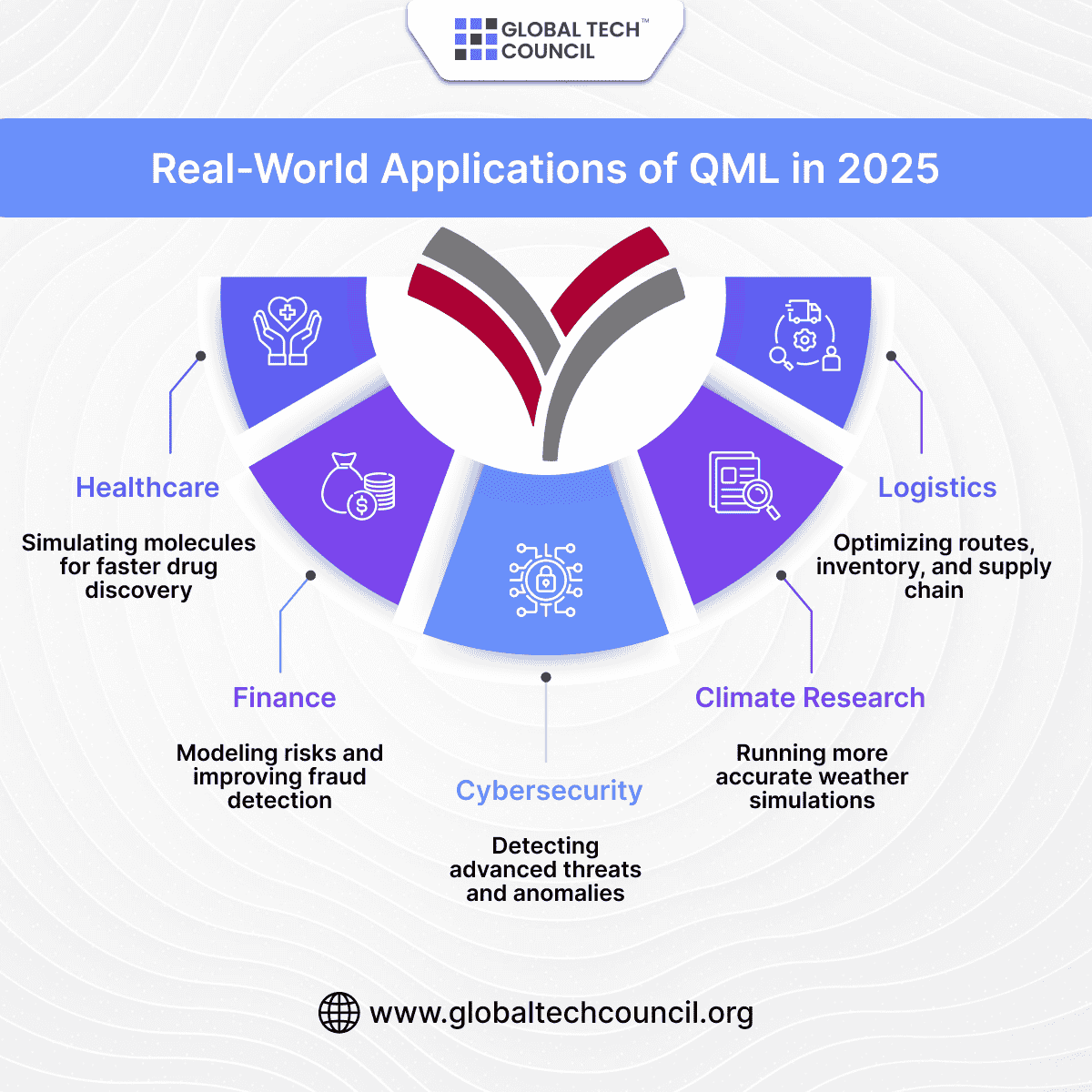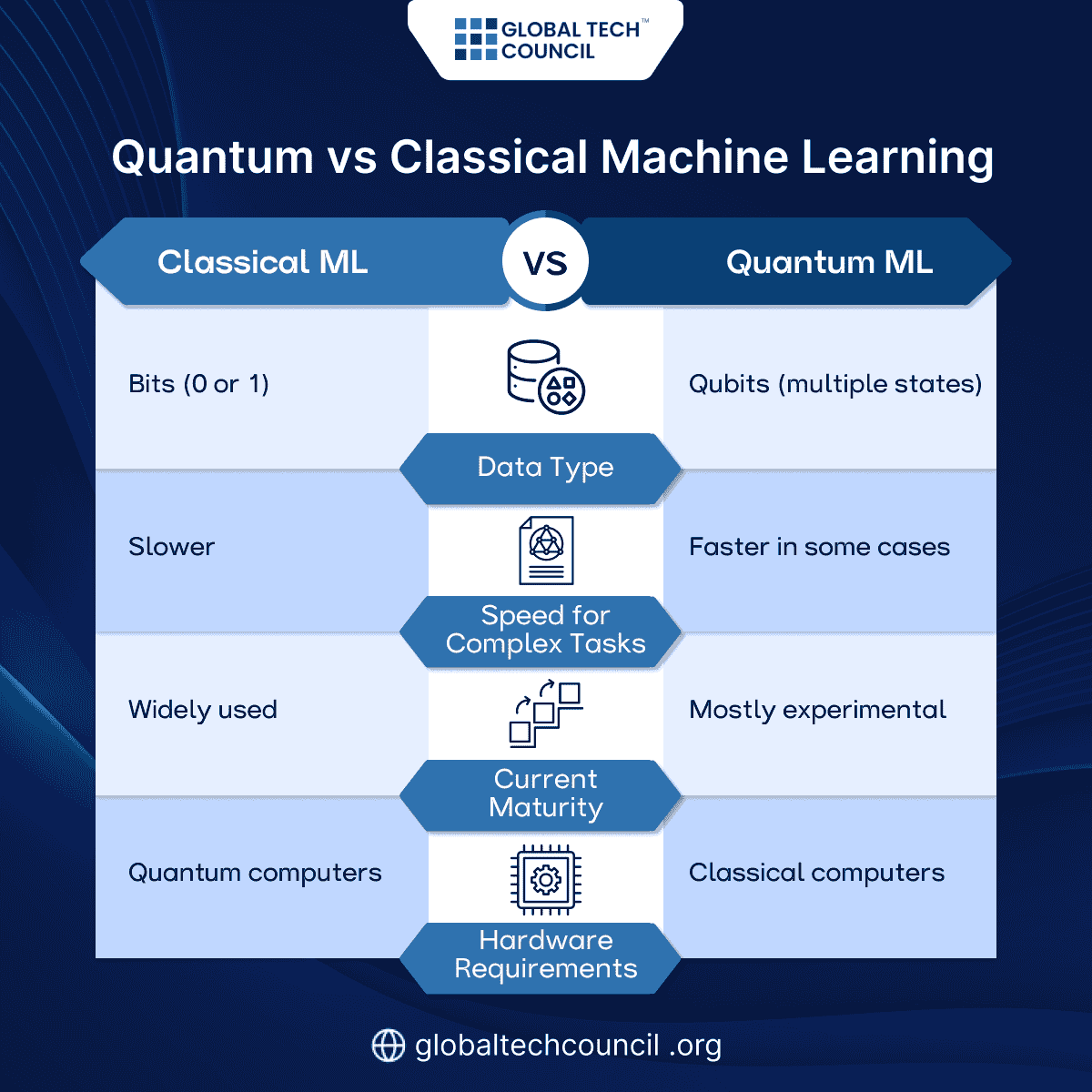
In 2025, QML is still developing, but its potential is massive — especially in fields that need high-speed computing like drug research, finance, and optimization.
How Does Quantum Machine Learning Work?
Traditional computers use bits — 0s and 1s — to process information. Quantum computers use quantum bits, or qubits, which can be in multiple states at once. This allows them to process many possible outcomes at the same time.
QML uses this ability to speed up tasks like:
- Training large machine learning models
- Exploring all paths in a decision tree
- Solving optimization problems with thousands of variables
There are two types of approaches:
- Quantum-native models, which run fully on quantum systems
- Hybrid models, which combine classical and quantum computing
Today, hybrid models are more practical because quantum computers are still limited.
What Are the Benefits of Quantum Machine Learning?
Quantum Machine Learning can offer several advantages over classical ML:
- Faster computation for certain problems
- Ability to handle more variables at once
- Better performance on optimization and simulation tasks
- Improved potential for discovering patterns in large, complex datasets
But it’s important to remember that these benefits apply to specific cases. QML won’t replace traditional ML — it will enhance it.
Challenges With Quantum Machine Learning
Quantum computing is still new, so QML has limitations:
- Quantum computers are expensive and not widely available
- Most QML models are still experimental or in research labs
- Developers need knowledge of both quantum physics and machine learning
- Programming quantum systems requires special tools and training
QML is a promising field, but it’s not fully ready for day-to-day business use yet.
Where Is Quantum Machine Learning Used?
Even though QML is still growing, it’s already being tested in areas that need high performance and precision.
Real-World Applications of QML in 2025
These are still early-stage use cases, but large companies and research groups are investing heavily in them.
Quantum Machine Learning vs Classical Machine Learning
Should You Learn Quantum Machine Learning?
If you are just starting out in data science, you don’t need to jump into QML right away. Instead, focus on building a strong base in data science and machine learning. Python, statistics, and classical ML models are still the most important tools.
Once you’re confident with the basics, you can start learning QML through online tools like Qiskit, PennyLane, and TensorFlow Quantum.
To start your journey, consider a Data Science Certification that covers all the key skills you’ll need. If you want to explore more tech fields, including AI and blockchain, visit the Blockchain Council for a range of expert-led programs.
Conclusion
Quantum Machine Learning is a growing field that brings new possibilities to machine learning. It’s not a replacement for traditional methods, but it could become a powerful partner — especially as quantum hardware improves.
While it’s not yet mainstream, staying informed and learning the basics could give you an edge in the future of AI and advanced analytics.


Leave a Reply